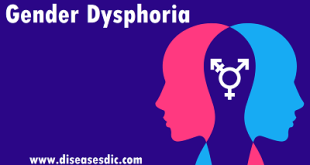Definition of Gigantism
Gigantism is a rare condition that causes abnormal growth in children. This change is most notable in terms of height, but girth is affected as well. It occurs when your child’s pituitary gland makes too much growth hormone, which is also known as somatotropin.
Early diagnosis is important. Prompt treatment can stop or slow the changes that may cause your child to grow larger than normal. However, the condition can be hard for parents to detect. The symptoms of gigantism might seem like normal childhood growth spurts at first.
Epidemiology
Pituitary gigantism is a rare disorder. Most pediatric endocrinologists may see at most one or two patients with the condition during their careers. In one large series of 2367 children and adolescents with pituitary adenomas, only 15 (0.6 percent) had pituitary gigantism. Although much of our understanding of this disease has been derived from isolated case reports and extrapolation from the adult literature, a retrospective review of 208 cases of pituitary gigantism from around the globe provides important insights. These include male predominance and a lack of identifiable genetic etiology in more than 50 percent of cases. Gigantism may occur at any age, and has been observed as early as the first two to three months of life.
Types of gigantism
Pituitary gigantism
The pituitary gland is located at the base of the brain, and it is the root cause behind this disease. A hypothalamic condition, caused due to the excess activity of the pituitary gland overproduces the growth hormone, and this leads to gigantism. An adenoma of pituitary gland also causes this disease
Mammary gigantism
It is not necessary that gigantism may always occur in humans. It may also occur in other animals, i.e. animal gigantism or mammary gigantism is also possible. For example, Island gigantism is a phenomenon in which there is an increase in the size of animals that are isolated in an island, as compared to their other relatives.
Cerebral gigantism
Cerebral gigantism is also known as Sotos Syndrome. It is a genetic disorder, which occurs rarely, and is manifested by excessive physical growth during the initial 2 to 3 years of life. It is often accompanied by a sort of mental retardation, delay in social development and cognitive ability in the child, a low muscle tone, and impairment in speech. The individuals suffering from a disproportionate growth with a large head and protruding forehead.
Local gigantism
It is a condition in which there is an enlargement of a certain body part. Only a certain part of the body acquires a larger size, due to the excessive growth of anatomical features of the body. It occurs in the toes and fingers. There may be cases when the entire limb may be enlarged. It is also known as localized gigantism.
Risk factors
There are many risk factors due to gigantism. There are certain diseases that occur due to this disease. Some of them are:
- McCune Albright Syndrome: It is a disorder that shows abnormalities in the development of bone and skin pigmentation.
- Gigantism decreases in the normal span of the person’s life
- Multiple endocrine neoplasias (men) – A genetic disorder, which occurs due to the formation of a tumor due to an overactive endocrine gland
Causes of gigantism
- From the time someone is born, the way their body grows is controlled by hormones produced by the pituitary gland in the brain. The most important hormone for growth is called growth hormone, also known as human growth hormone, HGH or GH.
- Most children with gigantism have too much growth hormone, which makes them grow too much, too fast.
- Gigantism is almost always caused by a benign tumor, also known as an adenoma, growing in the pituitary gland. Usually, there is no obvious reason for this, although it may be due to rare genetic conditions.
- There are also rare genetic conditions that can cause gigantism without the child having an adenoma. Examples include Sotos syndrome, Beckwith-Wiedemann syndrome, and Weaver syndrome. You can learn more about rare genetic conditions here.
- A similar condition to gigantism, known as acromegaly, can affect adults. Like gigantism, acromegaly causes abnormal growth, but instead of making the person grow tall, it causes other symptoms.
Symptoms of gigantism
Symptoms are as follows:
- Abnormally tall stature
- Abnormal growth of the face, hands, and feet
- Thickened facial features
- Irregular menstrual cycle
- Excessive perspiration with slight activity
- Delayed puberty
- Double vision
- Deafness
- Headache
Complications of gigantism
Surgery and radiation treatment may lead to low levels of other pituitary hormones. This can cause any of the following conditions:
- Adrenal insufficiency (adrenal glands do not produce enough of their hormones)
- Diabetes insipidus (extreme thirst and excessive urination; in rare cases)
- Hypogonadism (body’s sex glands produce little or no hormones)
- Hypothyroidism (thyroid gland does not make enough thyroid hormone)
Diagnosis and test
Your doctor will conduct a physical examination and ask you about your medical history and symptoms.
Other diagnostic procedures include:
- Hormone testing
- Imaging scans
Hormone Testing
Doctors are looking for an elevated blood IGF-1 level to diagnose gigantism.
Your doctor may order an oral glucose tolerance test (OGTT) to confirm the diagnosis.
- Drinking 75 grams of glucose solution lowers blood GH levels to less than one nanogram per milliliter (ng/ml) in healthy people.
- In acromegalics, this suppression does not occur. In fact, sometimes GH levels increase.
MRI Imaging
One method is used for detecting pituitary tumors is using sophisticated magnetic resonance imaging (MRI) of the pituitary gland. At the Pituitary Tumor Program, a special MRI pituitary protocol can be used in order to best visualize the tumor. The vast majority (90%) of GH-secreting tumors are macroadenomas.
Treatment of gigantism
Treatments for gigantism aim to stop or slow your child’s production of growth hormones.
Surgery
Removing the tumor is the preferred treatment for gigantism if it’s the underlying cause.
The surgeon will reach the tumor by making an incision in your child’s nose. Microscopes or small cameras may be used to help the surgeon see the tumor in the gland. In most cases, your child should be able to return home from the hospital the day after the surgery.
Gamma knife radiosurgery
- Gamma knife radiosurgery is an option if your child’s doctor believes that traditional surgery isn’t possible.
- The “gamma knife” is a collection of highly focused radiation beams. These beams don’t harm the surrounding tissue, but they’re able to deliver a powerful dose of radiation at the point where they combine and hit the tumor. This dose is enough to destroy the tumor.
- Gamma knife treatment takes months to years to be fully effective and to return the levels of growth hormone to normal. It’s performed on an outpatient basis under general anesthetic.
- However, since the radiation in this type of surgery has been linked to obesity, learning disabilities, and emotional issues in children, it’s usually used only when other treatment options don’t work.
Medications for gigantism
- In some cases, surgery may not be an option. For example, if there’s a high risk of injury to a critical blood vessel or nerve.
- Your child’s doctor may recommend medication if surgery is not an option. This treatment is meant to either shrink the tumor or stop the production of excess growth hormone.
- Your doctor may use the drugs octreotide or lanreotide to prevent the growth hormone’s release. These drugs mimic another hormone that stops growth hormone production. They’re usually given as an injection about once a month.
- Bromocriptine and cabergoline are drugs that can be used to lower growth hormone levels. These are typically given in pill form. They may be used with octreotide. Octreotide is a synthetic hormone that, when injected, can also lower the levels of growth hormones and IGF-1.
- In situations where these drugs are not helpful, daily shots of pegvisomant might be used as well. Pegvisomant is a drug that blocks the effects of growth hormones. This lowers the levels of IGF-1 in your child’s body.
Prevention of gigantism
- Gigantism cannot be prevented. Early treatment may prevent the disease from getting worse and help avoid complications.
- 80 percent of gigantism cases are cured with surgery.
- If the tumor returns or if surgery cannot be safely attempted, medications can be used to reduce your child’s symptoms and allow him or her to live a long and fulfilling life.
 Diseases Treatments Dictionary This is complete solution to read all diseases treatments Which covers Prevention, Causes, Symptoms, Medical Terms, Drugs, Prescription, Natural Remedies with cures and Treatments. Most of the common diseases were listed in names, split with categories.
Diseases Treatments Dictionary This is complete solution to read all diseases treatments Which covers Prevention, Causes, Symptoms, Medical Terms, Drugs, Prescription, Natural Remedies with cures and Treatments. Most of the common diseases were listed in names, split with categories.







